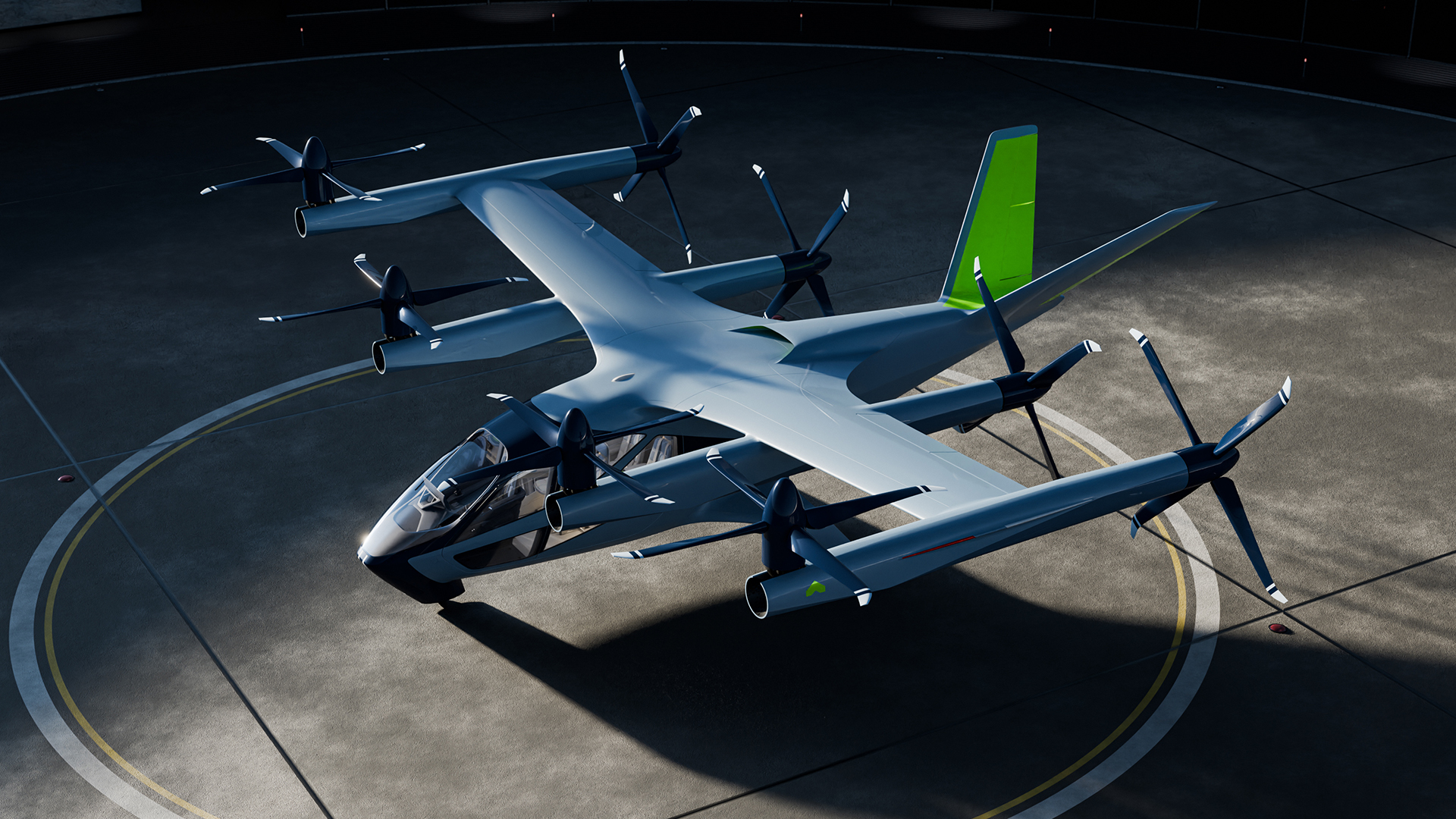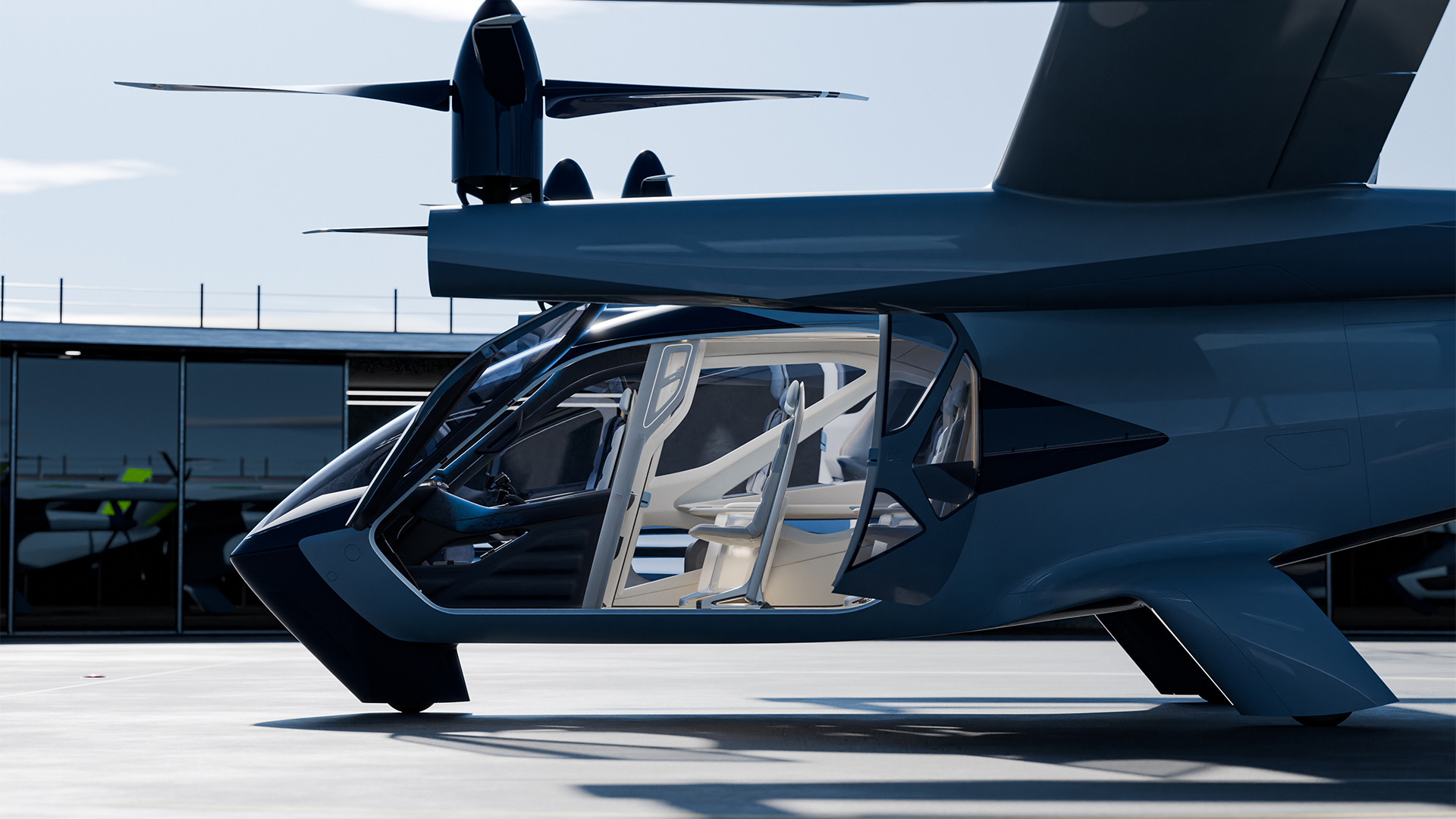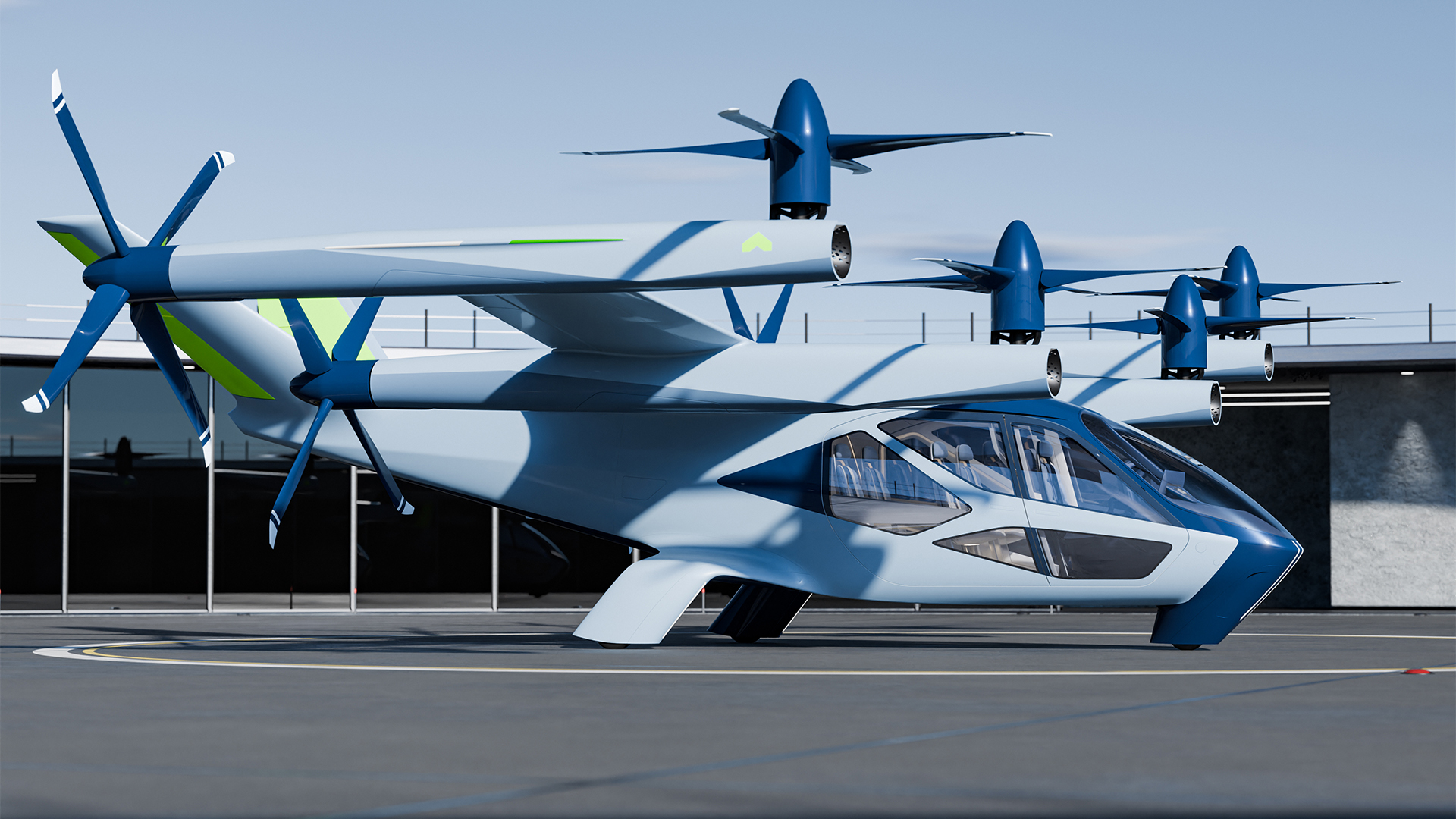
Hyundai's Advanced Air Mobility (AAM) unit, Supernal, launched its latest look at electric vertical take off and landing (eVTOL) craft at CES 2024, with its S-A2 vehicle looking set to provide an "entirely new form of mobility", according to CEO of the company, Jaiwon Shin.
Moving the game on from its 2020 concept, neatly named the S-A1, this new model offers a much better insight into what might be zipping around the skies of our cities before the end of the decade, as it's the vehicle that moves Supernal on from its technology demonstrator to the form the company will be testing in 2025.
Designed by Luc Donckerwolke, chief designer Hyundai Motor Group and the man behind many of the brand’s recent EV hits, the SA-2 features a four seat cabin and eight rotors to get it off the ground, capable of propelling the machine at speeds of up to 120mph for journeys ranging from 25 to around 40 miles.

It does this using battery technology, so it emits nothing in terms of local CO2, while Jaiwon Shin says it has been designed to operate near silently, emitting just 65db during take-off and around 45db during cruise - that’s the equivalent of a modern dishwasher, according to Supernal.
But we have our doubts that the eight spinning rotors won’t make a hell of a racket during initial lift-off, considering a small consumer drone is enough to turn heads whenever it takes off.
Blending the performance of an aeroplane with the convenience of a helicopter, the Supernal S-A2 will fly at a height of 1,500ft and aims to operate in heavily congested urban areas, beating traffic jams and completing relatively long urban hauls in a matter of minutes via 'vertiports'.

There's no word on an official price to ride, but Shin suggests that around 30 per cent more than the current Uber Black offering is a vague target.
Inside, the modular cabin can be configured to seat eight or four passengers in style, or the seats can be removed entirely if the need requires.
Supernal says that 'upgrade-ability' has been built into Donckerwolke’s futuristic design, meaning that the latest battery technology can easily be employed in future generations of the aircraft, ensuring it is the most up to date when it goes public.
Hyundai and Supernal say they are aiming for full certification to fly by 2028, but caveat that with the fact that for advanced air mobility to take off, "vehicle OEMs, regulatory bodies and supply chains all have to work in harmony to ensure AMM moves out of sci-fi movies and into real world," according to Jaiwon Shin.



!["[T]he First and Fifth Amendments Require ICE to Provide Information About the Whereabouts of a Detained Person"](https://images.inkl.com/s3/publisher/cover/212/reason-cover.png?w=600)



